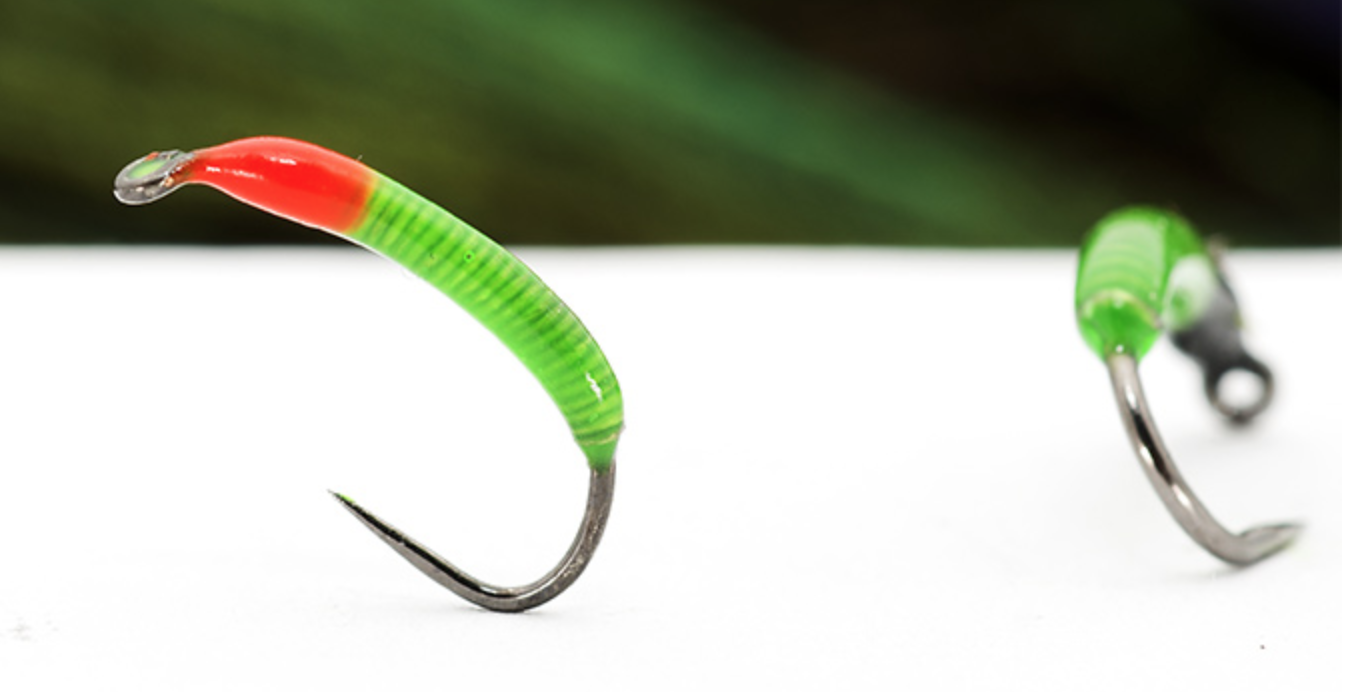Montée par Lucian Vasies
Voir les matériaux.
Emploi de résine UV de couleur. Remplace la peinture vitrail Pebeo.
Noter que cette résine ne donne pas le même effet de segmentation que la Pebeo vitrail car je pense qu'elle n'est pas assez liquide.
Notes de l'auteur:
Ceramic Nymphs and how to make them much faster
Ceramic nymphs are known in France and became popular with the help of a French tier – Stan. These flies are developed for fishing in rivers with high fishing pressure, where educated fish are very careful in what they pick from water surface or from the river bed. Beaded flies are not so effective in these rivers ( from French Alps ) and the local guys developed a kind of nymph that sink super fast without having a tungsten bead. Dubbing or anything else modify the sinking rate due to water resistance. So they found a solution: lead wire colored and coated. First times these nymphs where colored with porcelain dye, cooked in oven at 200 Celsius degree and then colored again, coated with head cement for a deep translucent look. A lot of time spent to make these flies
Not , in these days when colored resins are available, the “old” treatment is not needed because with these modern resins this kind of fly can be tied in 3-6min depending how many colors a tier wants to use. How to make them much faster is simple: just wrap the lead wire, coat with the colored resins and that is is!
Bellow are those tied by me these days with chartreuse/black and orange. These versions represent a ryachophila larva ( the free swimming version ). With slim profile, tied small, this fly will sink fast and will remain balanced ( due to the fact that the lead wire is added on the entire length of the hook shank ).

There is one big secret on this fly: to remain small. Means the hugest and the biggest should be made in size #14. The most successful size is #16-18.
Traduction souhaitée?

